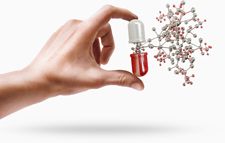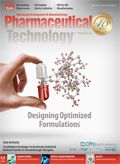Designing Optimized Formulations
Design of experiment plays a crucial role in the optimization process of formulation development.
Iaroslav Neliubov/shutterstock.com

The process, equipment, and technology for developing and manufacturing oral solid-dosage forms are well defined. Nonetheless, designing a drug product formulation that achieves the desired properties of the target profile both in magnitude and robustness is a multi-dimensional, and generally, constrained optimization problem, observes Aaron Goodwin, principal investigator, Research and Development, Capsugel. The ultimate goal in formulation development is to deliver the drug to the right place, at the right time, in the right concentration so that a beneficial therapeutic effect is achieved, John McDermott, executive director, Drug Product Optimization, Quotient, explains.
“Historically, the focus of formulation optimization has been placed upon the manufacturing process because molecules and drug-delivery requirements were arguably more straightforward,” says McDermott. He points out that most new chemical entities (NCEs) entering the development pipeline, however, often have complex physicochemical properties that require enabled formulation technologies to overcome solubility and/or permeability challenges, or a modified-release technology to achieve a suitable treatment regime or protect patients from adverse events associated with peak plasma concentrations. “In all of these cases, optimization of the formulation composition is essential to ensure successful and consistent drug delivery without compromising other criteria, such as dosage form size, or wasting valuable drug,” he says.
It is, therefore, imperative that key formulation and process parameters be identified and selected based on a quantitative and phase-appropriate risk assessment with regard to the clinical dosage form having suitable properties, Goodwin stresses. “This approach is crucial to ensuring a high probability of achieving the target pharmacokinetic (PK) profile and thus the desired efficacy and patient safety, as well as manufacturability and cost,” he says.
For every drug product, the parameters that have to be optimized are different, notes Ravinder Kodipyaka, senior director and head, Formulation R&D, Custom Pharmaceutical Services, Dr. Reddy’s Laboratories. “For example, for a simple immediate-release tablet that is wet granulated, key optimization parameters for formulation would be granulation end-point, blend particle size distribution, granulating media volume, blend moisture content, and granule size distribution. Key process parameters for optimization would be the mixing time, granulation time, and drying parameters, among others,” he says. “On the other hand, for a modified-release pellet coated with a polymer, the key optimization parameters for the formulation would be the film forming temperature, uniformity, and integrity of the film and its impact on drug dissolution and drug release. Key process parameters for optimization would be spray atomization, product temperature, and humidity control.”
Although each drug product’s key parameters are unique to the individual drug molecule and delivery challenge, there are several key metrics that are ubiquitous throughout oral solid-dosage form development, Goodwin points out for example, the pharmacokinetics (typically determined by the drug absorption, distribution, metabolism, and elimination [ADME] properties and drug release from the dosage form), drug substance and product stability, patient compliance, as well as manufacturability, processing throughput, and cost. “By establishing the relationships between formulation and process factors and the identified key parameters within these categories, formulators are able to not only study and address potential risks to key parameters, but also understand tradeoffs between them for a given formulation change,” he says.
According to Goodwin, a typical optimization process for an oral solid-dosage formulation involves establishing multivariate relationships between formulation and process inputs (or factors) and output product properties (or responses) in a quantifiable manner. “Basically, you need to identify critical parameters, establish workable ranges, conduct experiments as per study design, and understand factor-response effects,” adds Kodipyaka.
“Generally, the optimization process is initiated during the proof-of-concept stage and continues up to commercialization,” says Goodwin. An empirical approach to optimization is common, observes Kodipyaka, but there is a rapid shift towards the use of mathematical models and software that can provide insights into product variables (dependent or independent), including the identification of constraints/limits and the design of experimental space.
Design of experiments
Industry experts agree that design of experiments (DoE) is an essential element in drug product development. “DoE is an effective method of evaluating product parameters and identifying critical parameters that need consideration during product optimization,” says Kodipyaka. “Unlike the conventional method of evaluating one variable/parameter at a time, which can sometimes provide incomplete information when other parameters exist, DoE allows for simultaneous evaluation of various parameters, as well as their interactions and influence on target product parameters (TPP),” he adds. “By using DoE, there is an increased probability of product success because of large datasets that are generated systematically and evaluated statistically.”
According to Kodipyaka, inputs from the early stages of development, such as the selection of excipients, manufacturing technology, and packaging, among others, inevitably have a significant impact on the optimization activities that have to be performed as the product progresses through further stages of development. “You need to have a good understanding of R&D and product scale operations, the impact of upscaling and downscaling, and factors that influence product robustness,” he stresses. Kodipyaka believes that a combination of an empirical approach (experience-based) and software/artificial intelligence is the best way to optimize drug products.
Among the benefits to drug product formulation optimization are improved patient safety and compliance, reduced unit cost, and reduced probability of a failed batch, notes Goodwin. However, there are downsides, he says. “Optimization studies can be costly and increase time to market. Moreover, optimization can be somewhat recursive if done in a univariate manner without regard for tradeoffs between key parameters.”
Reducing optimization costs
There are many strategies to reduce the time and cost associated with optimization, observes Goodwin. “Capsugel, for example, uses two strategies when optimizing oral solid-dosage forms containing amorphous spray dried dispersions (SDDs),” he says. “The first approach is the integration of drug product and drug intermediate, while the second is the application of modeling and simulation.”
The first strategy, according to Goodwin, is difficult to apply if the drug is in the crystalline form, but works well when the amorphous form is used. “This is because many of the crystalline drug attributes that are set by its crystal structure and habit cannot be ‘tuned’ or modulated significantly by the crystallization process. For this reason, the drug substance and drug product are traditionally developed and optimized independently,” he explains.
On the other hand, producing an amorphous drug form by spray drying can substantially change the drug attributes. The development and optimization of the drug substance and drug product can, therefore, be efficiently integrated, Goodwin points out. In doing so, it is often possible to significantly reduce the risk for multiple drug product and drug intermediate key parameters more so than conducting two independent optimization studies, he says, and this can save experimental and testing time and the cost of an additional optimization study.
The second strategy uses modeling and simulation, and is employed twofold, according to Goodwin. “First, the approach is leveraged to think fundamentally about process and formulation, and generate hypotheses and constraints about a given optimization problem statement. This type of thinking allows hypothetical correlations between inputs and outputs to guide efficient experimental design. Outputs allow these models to be refined as a fundamental knowledge base is built,” he says. Goodwin explains that this strategy saves time, cost, and drug substance because it not only reduces the total amount of experiments, but also maximizes the information from each. Second, the science of scale is taken into account. “The use of scale up and down predictive models enable a higher degree of confidence when scaling processes,” Goodwin says. “It also allows the formulator to be proactive about how a formulation will scale, even at the prototype stages.”
Quotient has also developed a platform to enable formulations to be designed, manufactured, and clinically evaluated rapidly. Traditionally, formulation development studies involve expensive and time-consuming screening of multiple prototypes in preclinical species to identify a limited number of pseudo-optimized systems for human clinical PK studies, notes McDermott. The success of this approach, however, is contingent on the preclinical model being predictive of the human response, and one of the selected formulations achieving acceptable performance in man. “There is a lack of predictability between animal bioavailability and human bioavailability owing to substantial inter-species physiological differences affecting dissolution, absorption, and metabolism of the drug molecule,” says McDermott. “A frequent outcome from the traditional approach is the need to conduct a further cycle of in-vitro and in-vivo studies, resulting in additional delays and cost to the development program.”
According to McDermott, Quotient’s approach has been built on two premisesfirstly, the desire to make decisions based on human PK data rather than non-representative preclinical models; and secondly, the need to expedite the critical path for chemistry, manufacturing, and control (CMC) activities for prototype screening in humans by removing non-value added tasks and activities. “By using this approach, a drug product can be manufactured within seven days of dosing, removing stability package generation from the critical path to obtain clinical data on product performance,” he says. “Integrated GMP manufacturing with clinical testing allows clinical data from one study period to be used to select the product to be manufactured for evaluation in the next period.” Quotient’s rapid formulation development and clinical testing (RapidFACT) approach enables companies to select and optimize formulation technology in human subjects quickly, and according to McDermott, increases the accuracy of the optimization process.
“The product development approach taken by Dr. Reddy’s consists of three phasesproduct design; design testing and optimization; and production,” Kodipyaka highlights. Formulation optimization is done during the product design phase as the company believes this approach helps to bridge the gap between R&D and commercial production of the final drug product. Kodipyaka explains that all activitiesfrom characterizing the input materials to defining the target features of the final productwill be divided into a unit stage and assessed both in-part and holistically, to identify important parameters. “A tentative control strategy is designed for each parameter, and then it is assessed whether that parameter is major, minor, or critical. Accordingly, an optimization plan is devised for the product composition and the manufacturing process,” says Kodipyaka. “By using this approach, we are able to see a virtual product on paper. Unlike trial-and-error methods, a systematic product design approach that uses simulations, software, and algorithms can reduce conventional experimentation methodology, hence bringing substantial time and cost benefits when optimizing a formulation.”
Article Details
Pharmaceutical Technology
Vol. 41, No. 4
Pages: 16–21
Citation
When referring to this article, please cite it as A. Siew, " Designing Optimized Formulations," Pharmaceutical Technology 41 (4) 2017.

Drug Solutions Podcast: A Closer Look at mRNA in Oncology and Vaccines
April 30th 2024In this episode fo the Drug Solutions Podcast, etherna’s vice-president of Technology and Innovation, Stefaan De Koker, discusses the merits and challenges of using mRNA as the foundation for therapeutics in oncology as well as for vaccines.
Drug Solutions Podcast: Applying Appropriate Analytics to Drug Development
March 26th 2024In this episode of the Drug Solutions Podcast, Jan Bekker, Vice President of Business Development, Commercial and Technical Operations at BioCina, discusses the latest analytical tools and their applications in the drug development market.